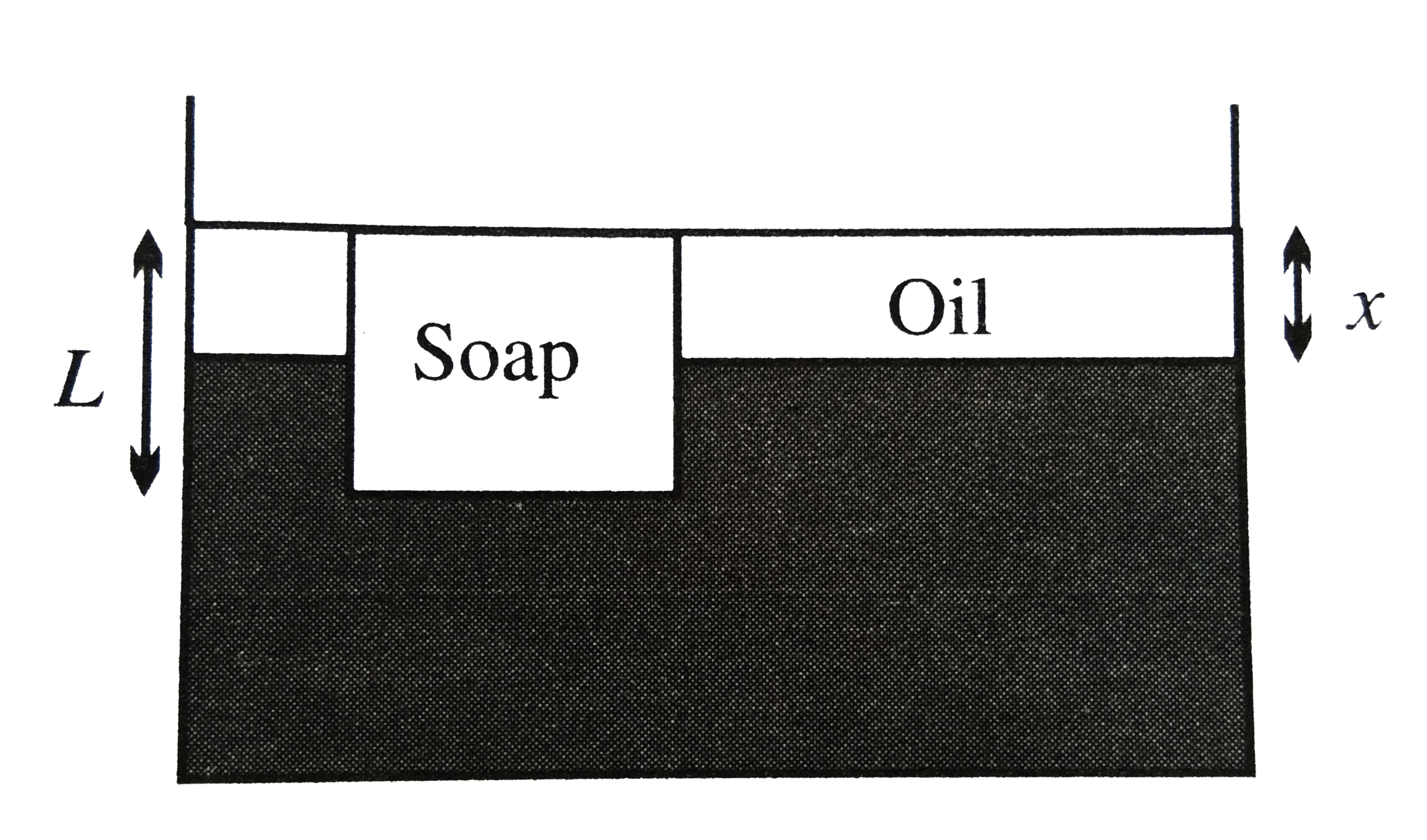An iceberg of density 900kg/m3 is floating in water of density 1000kg/m3. The percentage of volume of ice cube outside the water is
20
35
10
11
The correct Answer is:C
To solve the problem of finding the percentage of the volume of an iceberg that is outside of the water, we can follow these steps:
Step 1: Understand the Problem
We have an iceberg with a density of ρice=900kg/m3 floating in water with a density of ρwater=1000kg/m3. We need to find the percentage of the iceberg's volume that is above the water surface.
Step 2: Define Variables
Let:
- V = Total volume of the iceberg
- V1 = Volume of the iceberg submerged in water
- V2 = Volume of the iceberg above the water surface
From the definition of volume, we have:
V=V1+V2
Step 3: Apply the Principle of Buoyancy
According to Archimedes' principle, the weight of the water displaced by the submerged part of the iceberg is equal to the weight of the iceberg itself. Therefore, we can write:
Weight of iceberg=Weight of water displaced
This can be expressed mathematically as:
V⋅ρice⋅g=V1⋅ρwater⋅g
Where g is the acceleration due to gravity, which cancels out from both sides:
V⋅ρice=V1⋅ρwater
Step 4: Relate Submerged Volume to Total Volume
From the equation above, we can express V1:
V1=V⋅ρiceρwater
Step 5: Substitute Known Densities
Substituting the known densities:
V1=V⋅9001000=0.9V
Step 6: Find Volume Above Water
Now, we can find V2:
V2=V−V1
V2=V−0.9V=0.1V
Step 7: Calculate the Percentage of Volume Above Water
To find the percentage of the iceberg's volume that is above the water, we can express it as:
Percentage of V2=(V2V)×100%
Percentage of V2=(0.1VV)×100%=10%
Conclusion
Thus, the percentage of the volume of the iceberg that is outside the water is 10%.
We have an iceberg with a density of ρice=900kg/m3 floating in water with a density of ρwater=1000kg/m3. We need to find the percentage of the iceberg's volume that is above the water surface.
Let:
- V = Total volume of the iceberg
- V1 = Volume of the iceberg submerged in water
- V2 = Volume of the iceberg above the water surface
V=V1+V2
According to Archimedes' principle, the weight of the water displaced by the submerged part of the iceberg is equal to the weight of the iceberg itself. Therefore, we can write:
Weight of iceberg=Weight of water displaced
V⋅ρice⋅g=V1⋅ρwater⋅g
V⋅ρice=V1⋅ρwater
From the equation above, we can express V1:
V1=V⋅ρiceρwater
Substituting the known densities:
V1=V⋅9001000=0.9V
Now, we can find V2:
V2=V−V1
V2=V−0.9V=0.1V
To find the percentage of the iceberg's volume that is above the water, we can express it as:
Percentage of V2=(V2V)×100%
Percentage of V2=(0.1VV)×100%=10%
Thus, the percentage of the volume of the iceberg that is outside the water is 10%.
Topper's Solved these Questions
- SOLVD PAPERS 2017 NEET, AIIMS & JIPMERBOOK - DC PANDEY ENGLISHCHAPTER - SOLVD PAPERS 2017 NEET, AIIMS & JIPMEREXERCISE - Solved paper 2018(NEET)
22 Videos
- SOLVD PAPERS 2017 NEET, AIIMS & JIPMERBOOK - DC PANDEY ENGLISHCHAPTER - SOLVD PAPERS 2017 NEET, AIIMS & JIPMEREXERCISE - Solved paper 2018(AIIMS)
28 Videos
- SOLVD PAPERS 2017 NEET, AIIMS & JIPMERBOOK - DC PANDEY ENGLISHCHAPTER - SOLVD PAPERS 2017 NEET, AIIMS & JIPMEREXERCISE - Solved Papers 2017(AIIMS)
26 Videos
- SIMPLE HARMONIC MOTIONBOOK - DC PANDEY ENGLISHCHAPTER - SIMPLE HARMONIC MOTIONEXERCISE - Integer type questions
14 Videos
- SOUND WAVESBOOK - DC PANDEY ENGLISHCHAPTER - SOUND WAVESEXERCISE - Exercise 19.7
4 Videos
Similar Questions
Density of ice is 900kg/m3. A piece of ice is floating in water of density 1000kg/m3. Find the fraction of volume of the picec of ice outside the water.
View SolutionDensity of ice is 900kg/m3. A piece of ice is floating in water of density 1000kg/m3. Find the fraction of volume of the picec of ice outside the water.
View SolutionA cube of density 250 kg/m2 floats in water, then what part of total volume of the cube outside the water?
View SolutionA cube of ice of side length 10 cm is floating in water of density 1000 kg/m3. Then pick up the correct statement (density of ice = 900 kg/m3)
View SolutionA rectangular bar of soap has density 800kg/m3 floats in water density 1000kg/m3. Oil of density 300kg/m3 is slowly added, forming a layer that does not mix with water. When the top surface of thhe oil is the some level as the top surface of the soap. What is the ratio of the oil layer thickness to the soap's thickness. x/L?

View Solution(a). A cube of side 5 cm is immersed in water and then in saturated salt solution. In which case will it experience a greater buoyant force. If each side of the cube is reduced to 4 cm and then immersed in water, what will be the effect on the buoyant force experienced by the cube as compared to the first case for water. Given reason for each case.
(b). A ball weghing 4 kg of density 4000 kg/m3 is completely immersed in water of density 103kg/m3 find the force of buoyancy on it. (given g=10m/s2)
View Solution
System is shown in the figure. Velocity of sphere A is 9 ms. Find the speed of sphere B.
View SolutionA cube made of material having a density of 900kgm−3 floats between water of density 1000kgm−3 and a liquid of density 700kgm−3, which is immiscible with water. What part of the cube is inside the water?
View SolutionAn iceberg is floating partially immersed in sea water. The density of sea water is 1.03gcm−3 and that of ice is0.92gcm−3. The approximate percentage of total volume of iceberg above the level of sea water is
View SolutionA tank is filled with water of density 103kg/m3 and oil of density 0.9×103kg/m3.The height of water layer is 1m and that of the oil layer is 4M. The velocity of efflux front an opening in the bottom of the tank is
View Solution